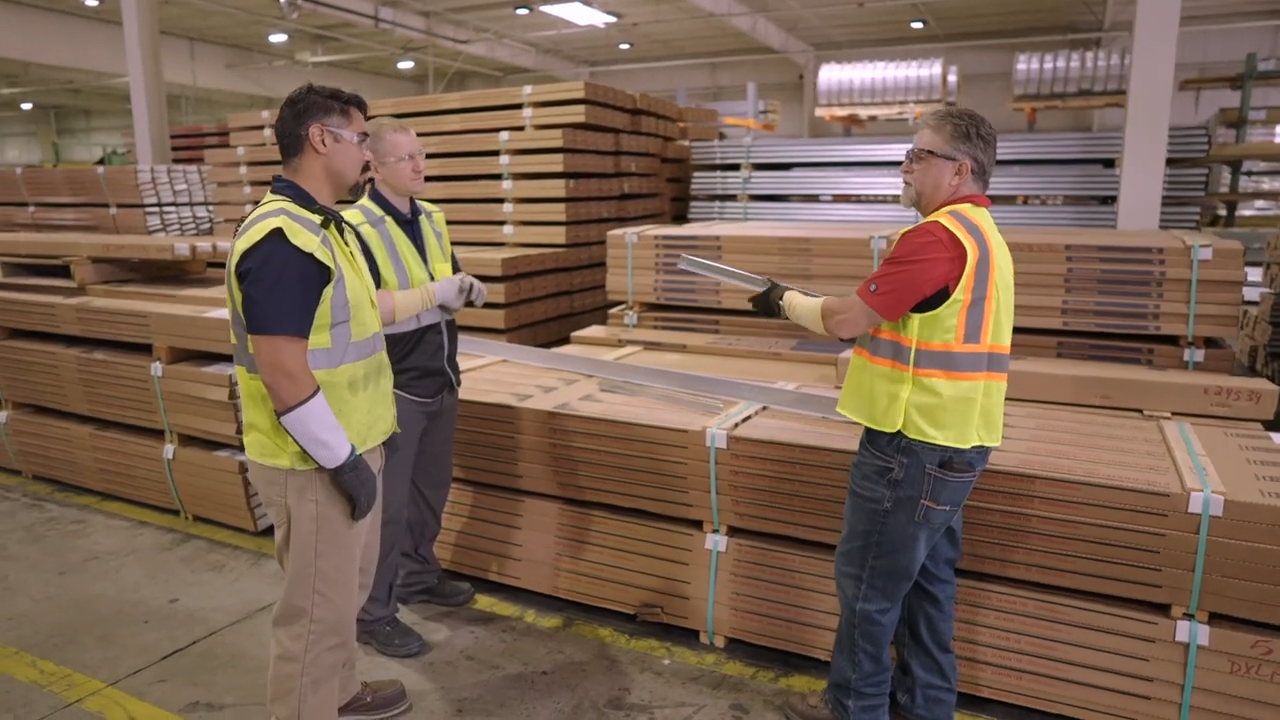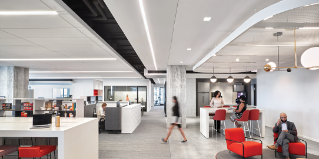Sign In
You're All Set
Welcome back! You are now signed in.
You have been logged out
You have been logged out due to inactivity
Forgot Password
Please enter the email address you used to create the account. We'll send you a link that lets you create a new password.
You're All Set
Please check your email. Click the link in the email to create a new password.
Reset Password
You're All Set
Success! Your password has been updated.
Change Password
You're All Set
Success! Your password has been updated.
Building for Seismic Resilience with USG
“Seismic” refers to any earthquake-related activity, and there are certain regions, especially the western US, that are considered high-risk zones. Buildings in these areas must be constructed under seismic compliance to ASTM E580. Compliance is necessary to create approved suspended ceiling systems and designs that meet seismic design requirements and provide life safety to occupants while maintaining building functionality during and after an earthquake.
Historically, seismic force levels were limited to smaller earthquake-prone locations, but major revisions to the 2000 International Building Code (IBC) now mandate that every construction project must include and meet a Seismic Design Category (SDC), even in areas that have not required seismic installations in the past.
Seismic Acceptance Criteria
Seismic construction standards have been established based on three key factors:
- Geographic location
- Although the western US is at a higher risk for seismic activity, there have been thousands of recorded earthquakes east of the Mississippi River since the 1700s.
- Soil condition
- A – Hard rock
- B – Rock
- C – Very dense soil and soft rock
- D – Stiff soil (default)
- E – Soft soil
- F – Special soils
- Building type
- Seismic Use Group III
- Essential facilities, such as hospitals, that must function both during and after an earthquake
- Seismic Use Group II
- Buildings that either constitute a substantial public hazard, such as power plants, or those that house over 300 people
- Seismic Use Group I
- Everything else
- Seismic Use Group III
By analyzing these three criteria for a construction project, you can determine the SDC (A-F). Areas within SDC-A and B are installed per ASTM C636, and SDC-C, D, E, and F are required to be installed in accordance with ASTM E580. Based on the ASTM E580 and ASCE 7 criteria, over one-third of the US designs all structures using these factors to create safer buildings due to the higher risk.
Understanding the Seismic Challenge
The goal of the ASTM E580 seismic design for nonstructural components is to ensure life safety, minimize property loss, and prevent functional loss. Nonstructural components, such as suspended ceiling systems, represent a significant portion of a project’s investment to new construction. Failure of these components in an earthquake can cause injury, block exits, hinder rescue efforts, and disrupt building operations.
As one of the most critical nonstructural components in seismic compliance, ceiling systems must remain secure and intact during seismic events to prevent panic, harm, and structural damage. This requires the manufacture and installation of ceiling systems capable of withstanding the forces of an earthquake to the best of their ability. USG combines testing, engineering expertise, product innovation, and close code body collaboration to deliver ceiling systems built to withstand seismic forces.
Future-Focused Design
Seismic activity is increasing in both frequency and intensity, necessitating the evolution of building systems. USG proactively analyzes seismic trends and designs products that anticipate future demands. This forward-thinking mindset ensures that today’s buildings are prepared for tomorrow’s challenges.
Since 1957, the Donn® Brand Suspension System portfolio has set the standard with optimal shape, size, steel gauge, and connection devices for maximum lateral and torsional rigidity. These systems are consistently proven to outperform seismic force requirements, and all main suspension systems include the code-compliant heavy-duty main tee required for SDCs D, E, and F or the code-compliant Intermediate Duty main tee required for SDC C.
One standout innovation is USG Donn® Brand AdvancedSpanTM Suspension System, a structural ceiling grid that is 2 ¾ inches tall (versus the standard 1½ inch), allowing for:
- Larger spans without support wires
- Easier installation of acoustical ceilings
- Enhanced structural performance in seismic zones
This system simplifies installation for contractors while improving safety and reliability in high-risk areas.
The USG Solution

"If we learn on every project, that's what the goal is: to learn, to adapt and change, and to create and design solutions."
— Michael O'Donnell, National Seismic Lead, USG
USG understands that seismic design isn’t a one-size-fits-all solution. Each project comes with its own set of variables, such as location, building type, structural requirements, and more. USG has a long history of supporting the development and research of seismic ceiling design and application through product development, industry collaboration, and support of building code evolution.
In fact, USG continues to perform seismic qualification tests with some of the nation’s leading institutions in seismic testing and research:
- University at Buffalo (SUNY) –Structural Engineering and Earthquake Simulation Laboratory (SEESL)
- University of California, Berkeley – Earthquake Engineering Research Center (EERC & PEER).
USG proudly invests in this ongoing endeavor to advance seismic safety because of our commitment to helping customers achieve their goals and needs. This lies at the heart of USG’s seismic strategy; whether it’s through product development, technical support, or on-site problem-solving, USG works with contractors to deliver safe, effective, and innovative solutions.
Find a range of USG Seismic Resources here.
Learn more about how Michael O’Donnell, National Seismic Lead, helps USG customers understand the challenges of building for seismic resilience in this episode of Pioneering Innovation:




